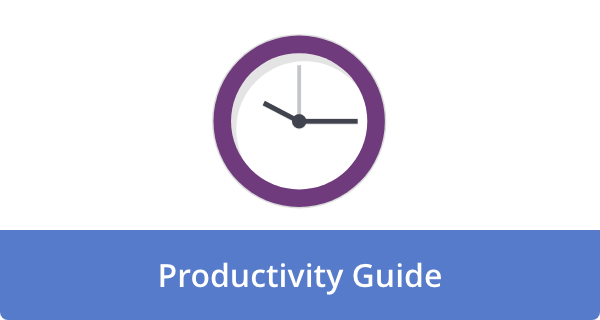

You’ve color-coded your calendar and followed high performers’ morning routines. You’ve also downloaded the latest apps to “optimize” your time and read productivity books. You even blocked your day into 15-minute intervals.
And yet, despite all this, you still feel behind. The more plans you make, the more burned out you become. If this sounds familiar, you’re not alone. You’ve just been sold the wrong solution.
I will tell you the hard truth: most time management advice fails. It’s not that you lack discipline, but that the entire concept is based on a false premise — that time can be controlled. The thing is, you can’t. Despite our best efforts, time moves forward regardless of how well we plan. But you can control where and how you focus your attention, manage your energy, and what matters most to you.
In this post, let’s uncover five powerful time-management strategies that actually work, based on real-world constraints rather than idealized routines.
Why Time Management Feels Like a Scam
The traditional productivity toolkit promises control by better scheduling, tighter planning, and harder work. Unfortunately, the message is always the same: You aren’t succeeding because you don’t have the right system yet.
Life, however, cannot be programmed. Occasionally, an emergency occurs. You’ll experience energy dips. Over time, your priorities will change. A rigid time management system ignores these variables. If reality disrupts your schedule, it can make you feel like you’ve failed. Not because you were doing anything wrong but trying to fit your life into a system built on unrealistic expectations.
Even worse? It is common for time management systems to confuse activity with progress. Despite checking 20 things off your list, you are no closer to what really matters. After all, that’s not productivity. That’s busywork.
Ultimately, the problem is not time. It’s your misalignment of time, energy, attention, and goals.
So what does real productivity look like? Well, let’s find out.
Shift #1: Manage Your Energy, Not the Clock
We tend to force ourselves to work like machines most of the time. Like clockwork, we’re expected to maintain a steady output between 9 a.m. and 5 p.m. You are not a machine. As a human being, you experience natural highs and lows throughout the day, which traditional time blocking does not account for.
The solution? Rather than working around the arbitrary divisions of the clock, plan your workday according to your natural peaks and troughs by;
- Identify your peak performance windows. Take note of when you feel focused and energized most consistently. Reserve your prime hours for your most important, high-value work, which requires deep concentration and creative thinking.
- Strategically utilize low-energy periods. Be aware of your natural dips in energy. Instead of focusing on deep work during these times, use them for less demanding activities such as administrative work, email processing, routine communication, and breaks.
- Prioritize real recovery. The purpose of breaks isn’t just to scroll through social media passively or check emails halfheartedly. For a genuine recovery, they are crucial. If time allows, take a break from your work, go for a walk, stretch mindfully, or take a nap. Your energy reserves can be replenished to sustain your productivity.
Aligning your tasks with your natural energy cycles will result in more meaningful work with less effort, even if you ultimately spend fewer hours “working.”
Shift #2: Ruthlessly Prioritize What Matters
There is a tendency to treat every task on your list equally regarding time management. I disagree with that. Some tasks move the needle, but in most cases, they don’t.
In other words, being productive doesn’t mean doing more. It’s about focusing on what matters and letting go of everything else.
The solution? Keep a sharp eye for prioritization, constantly assessing the value and necessity of any task you are considering. Try asking yourself these questions;
- What actions will lead to the greatest progress towards my goals? Choose those activities that will have the most significant impact on “needle-moving.”.
- What tasks can only I do? Invest your time and energy in developing your unique skills and responsibilities. If a task can be handled effectively by others or is not essential, delegate it or eliminate it.
- Is there anything I can completely eliminate, automate using technology, or delegate so I can focus on higher-level activities? Don’t be afraid to prune your commitments ruthlessly.
The above can be accomplished using the 1-3-5 Rule. Every day, consciously identify and commit to completing;
- 1 big thing. The most important and high-impact task of the day.
- 3 medium things. These tasks require focused effort but are not as critical as your “big thing.”
- 5 small things. Tasks that are quick and don’t require a lot of effort, but still need to be done.
Using this simple framework, you can make conscious choices about what deserves your limited time and energy. After all, embracing constraint breeds clarity and compels you to focus on what is important.
Shift #3: Build Resilient Systems, Not Rigid Schedules
Often, schedules fall apart when life doesn’t go according to plan. Instead of micromanaging every hour, build simple systems that help you stay grounded and intentional, no matter what comes your way.
The solution? Instead of focusing on rigid schedules, consider the resilience of systems. Even when your day deviates from plan, systems ensure that the right things happen consistently. To optimize your productivity and overall well-being, you should set up the following systems:
- Implement a weekly review. Set aside a specific time every week to step back, review your progress, and realign your priorities.
- Establish a morning focus ritual. At the beginning of the day, develop a routine that centers your intention, prepares your mind for focused work, and sets a positive tone. You can do this through mindful meditation, journaling, or reviewing your top priorities.
- Develop a consistent shutdown routine. Reviewing your accomplishments, planning for the following day, and mentally disconnecting from work at the end of the day will promote better sleep and a clearer transition from work to home life.
Systems automate key processes and create habits that drive consistent progress. They reduce the constant need to make decisions, allowing daily life to be weathered on a stable foundation.
Shift #4: Guard Your Attention Like a Fortress
There is no resource more valuable than your attention. All the time, the world would be useless without it. However, you’re constantly attacked by notifications, social media, emails, Slack, and other distractions.
The solution? Attention is a non-renewable asset, so you must treat it accordingly. You can do this by implementing robust strategies to shield your attention from distracting factors;
- Declare notification bankruptcy. Be sure to turn off all unnecessary notifications on your phone, computer, and other devices. Even if you ignore every buzz and ping, the world won’t end.
- Batch your communication. Schedule specific, limited times throughout the day to check and respond to emails and messages. Also, do not obsessively monitor your inbox.
- Employ focus-enhancing tools. For example, use applications such as Freedom or Cold Turkey to block distracting websites and apps during your designated focus periods.
- Work in focused sprints. Concentrate on 25—to 50-minute focus sessions followed by genuine breaks using techniques like the Pomodoro Technique. This will train your brain to maintain attention and minimize mental fatigue.
In a world that competes for your attention, it’s your most valuable asset. As such, guard it fiercely and intentionally.
Shift #5: Redefine Success Daily
The relentless pursuit of “more” is one of the most insidious aspects of traditional productivity culture. There is seldom a sense of accomplishment. Despite being technically productive, this constant striving can cause a pervasive feeling of inadequacy.
The solution? Be sure to include non-work accomplishments when defining a successful day for you. Be specific, realistic, and acknowledge progress in all aspects of your life.
Here are some examples of daily success definitions;
- “Write 500 meaningful words for my article.”
- “Have a distraction-free dinner with my family.”
- “Complete one challenging sales call with my full focus and presence.”
As a result of this practice, you end each day feeling progress and satisfaction that transcends mere task completion. In the absence of fulfillment, productivity is hollow.
What Truly Works: Building a Life Aligned with Your Values
Let go of the endless pursuit of optimizing every minute. Instead, address the core of how you want to live by asking deeper, more meaningful questions;
- What is it that I truly desire more time for in my life? Is there something, someone, or some pursuit that truly fulfills you in life?
- Is there anything I am currently engaged in that does not serve my well-being or goals? Allow yourself to let go of what no longer aligns with your values.
- How would I like my days to feel and flow? Don’t just think about your completed tasks, but your ideal daily experience.
You should then reverse-engineer your life to reflect those answers. Perhaps this means intentionally working fewer hours to prioritize family time. Maybe it means stepping away from a draining project to make room for more meaningful work. Or, consider protecting your mornings for deep, creative work and your evenings for restful sleep.
In traditional time management, you squeeze more into already full containers. To be truly productive, you need to curate the contents of that container with wisdom and intention — doing less, but better.
Final Thought: Trade Control for Clarity
By chasing control, traditional time management sells you confusion. Although you fill your day with well-planned tasks, you wonder what you accomplished by the end of the week.
The better path? Don’t try to control the clock. Instead, prioritize your energy, priorities, and values. Focus on what truly matters rather than trying to accomplish more.
Ultimately, that’s more than just productivity — doing what matters — it’s progress with a purpose. When I begin to get tired of my usual productivity quest, I move to ruthlessly pruning my schedule and controlling my clarity. Sometimes it helps to switch things up.
FAQs
Why does traditional time management often fail?
There are several key reasons why traditional time management fails;
- It treats time as a controllable, linear resource. Time is a constant, and how we perceive and experience it depends on numerous factors, including energy levels, our focus, and external demands. We cannot “manage” time itself; we can only manage our actions.
- Quantity is prioritized over quality. More often than not, the focus is on doing more in less time rather than on the work’s impact and value. As a result, you may feel busy without really being productive.
- Many time management systems ignore the human element. They ignore the unpredictable nature of life, the ebb and flow of energy, and the importance of rest, connection, and reflection. Our bodies are not machines that can be optimized.
- Stress and anxiety can be increased by it. As we constantly strive to be more efficient and adhere to rigid schedules, we can feel guilt and failure when we deviate from them. It is also possible to become stressed out when trying to achieve perfect time management.
- The focus is often on the wrong things. It’s easy to spend way too much time organizing tasks that aren’t important, and neglect the deeper work that really makes a difference.
- The underlying issues are not addressed. Time management techniques cannot solve the problem of low productivity resulting from unclear priorities, fear of failure, or perfectionism.
What should we focus on if we can’t “manage” time instead?
The most effective approach involves managing our attention, energy, and priorities instead of trying to control the uncontrollable. Specifically, this involves;
- Attention management. Engaging deeply with the task at hand by cultivating focus and minimizing distractions. The key here is to be present in the moment.
- Energy management involves identifying your natural energy cycles and scheduling your most demanding tasks at those times. Rest and recovery must also be prioritized to avoid burnout.
- Priority management. This involves consciously deciding where to invest your limited resources. You should focus your time and energy on activities that align with your values and goals.
What are some practical alternatives to strict time management techniques?
These flexible, human-centered approaches are more suitable than rigid schedules and endless to-do lists;
- Time blocking with flexibility. Rather than a minute-by-minute schedule, break your day up into broader blocks of time, allowing for some flexibility.
- Task prioritization based on impact and urgency. Focus on tasks that truly matter rather than just those that are urgent, using frameworks like the Eisenhower Matrix (Urgent/Important).
- Mindfulness and presence. You will become more focused and feel less rushed by cultivating awareness of the present moment.
- Regular review and reflection. Consider how you spend your time and energy, and adjust your approach accordingly.
- Setting realistic expectations. Don’t feel pressured to fulfill every commitment and learn to say “no” to those not aligned with your priorities.
- Batching similar tasks. Grouping similar tasks together can reduce the mental load of switching between them and increase focus.
- Focus on “deep work.” By setting aside dedicated time for cognitively demanding tasks, one can achieve significantly higher-quality results.
- Experimentation and iteration. Recognize that there is no one-size-fits-all solution. You may need to adapt your strategies depending on your individual circumstances and needs.
Is planning still important if strict time management isn’t the answer?
Yes, planning remains valuable. It is, however, more important to focus on intention rather than rigid control when approaching this issue. Rather than creating overly detailed schedules, consider;
- Setting broad intentions for the day or week. Make a list of the key outcomes you wish to achieve.
- Breaking down large tasks into smaller, manageable steps makes them easier to begin and less intimidating.
- Prioritizing your “Top 3” for the day. Identify the most important tasks that will move you toward your goals.
- Allowing for buffer time. Be flexible in your planning to account for unforeseen events or tasks that take longer than expected.
- Reviewing and adjusting your plan regularly. Don’t be afraid to adjust your plan as your energy levels, priorities, and unforeseen events change.
Image Credit: Anna Tarazevich; Pexels











John Hall
John Hall is the co-founder of Calendar a scheduling and time management app. He’s also a keynote speaker that you can book at http://www.johnhallspeaking.com.